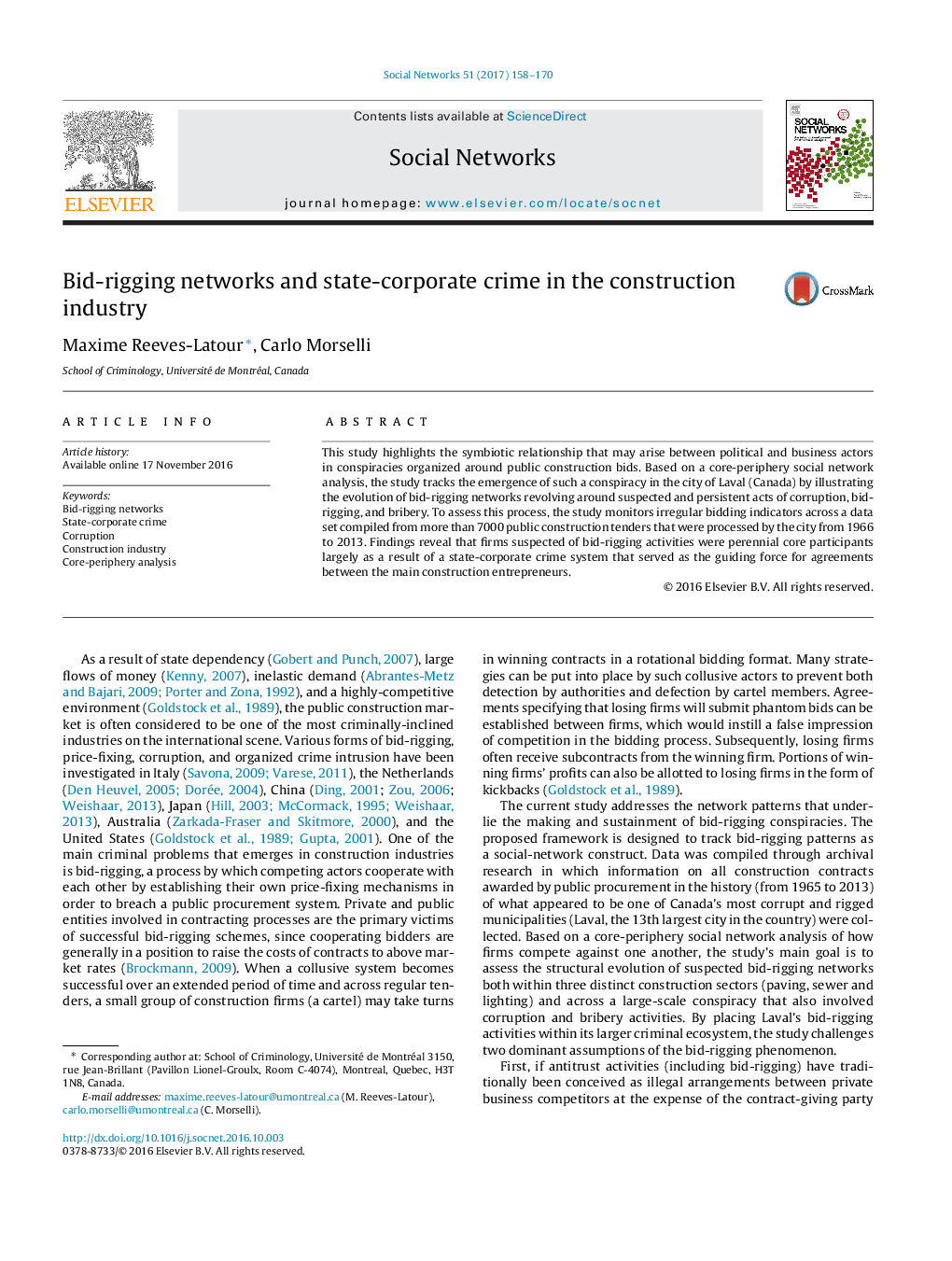| Article ID | Journal | Published Year | Pages | File Type |
|---|---|---|---|---|
| 5126765 | Social Networks | 2017 | 13 Pages |
â¢A core-periphery model is proposed to keep track of bid-rigging activities.â¢Collusive patterns are traceable in all construction sectors, across most elections.â¢State actors can shape the structure of bid-rigging networks, and vice versa.â¢Long-term mutual exchanges consolidate state-corporate conspiracies.
This study highlights the symbiotic relationship that may arise between political and business actors in conspiracies organized around public construction bids. Based on a core-periphery social network analysis, the study tracks the emergence of such a conspiracy in the city of Laval (Canada) by illustrating the evolution of bid-rigging networks revolving around suspected and persistent acts of corruption, bid-rigging, and bribery. To assess this process, the study monitors irregular bidding indicators across a data set compiled from more than 7000 public construction tenders that were processed by the city from 1966 to 2013. Findings reveal that firms suspected of bid-rigging activities were perennial core participants largely as a result of a state-corporate crime system that served as the guiding force for agreements between the main construction entrepreneurs.
